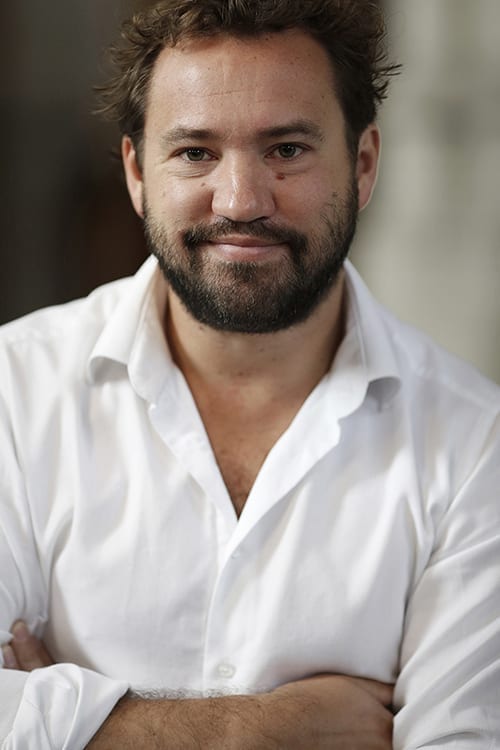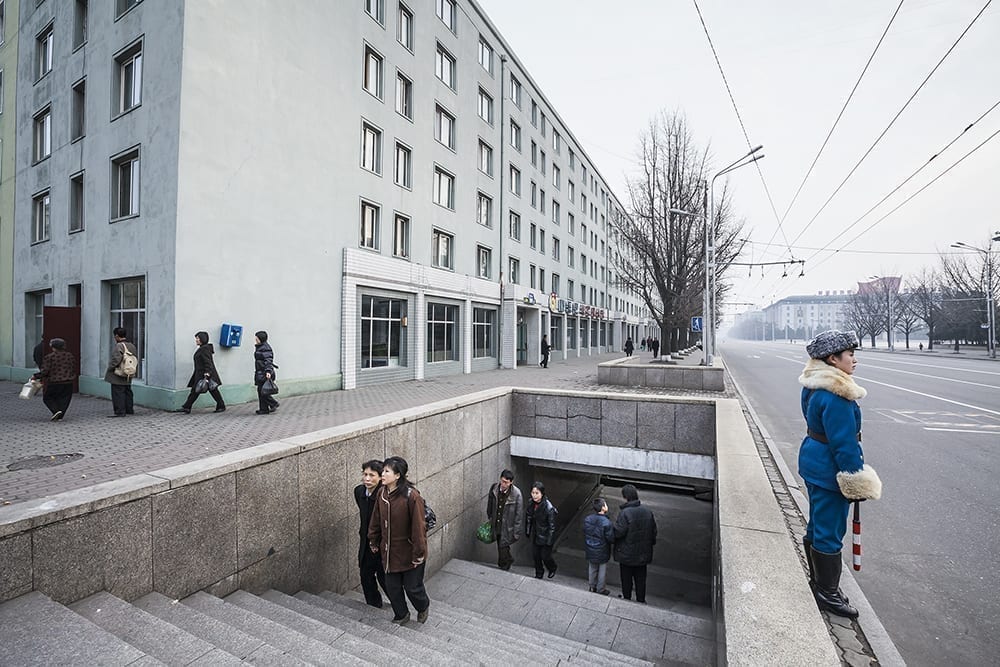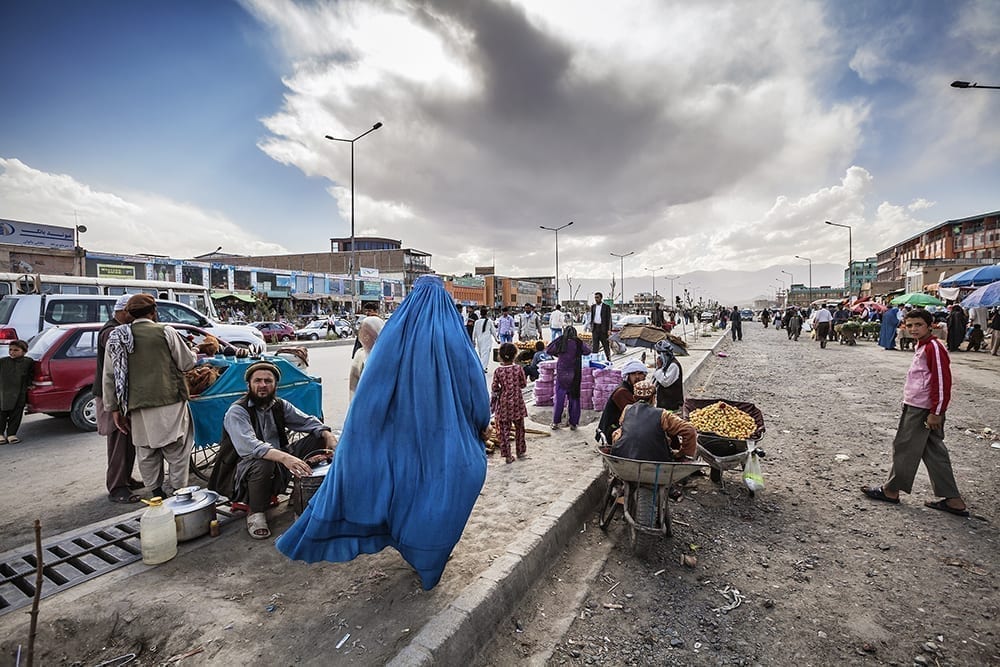In 2009 photojournalist Jeroen Swolfs started photographing street life around the world, visiting a total of 195 capital cities. Covering all the existing countries except for Equatorial Guinea, Yemen and Libya, Jeroen aims to show a positive image of the world we live in. His project ‘Streets of the World’ is the result of this impressive journey. It is a photography project that does not only impress by its scale, but also by his intriguing outlook and his eye for people.
Jeroen Swolfs
Tell me your story and where it all began?
I was born in The Hague and grew up in Wassenaar. My life as an adventurer started around the age of 5, when I ran off with my best friend and tried to make it to Paris.
Unfortunately I did not get that far. My journey came to an end the same evening, when the police dropped me off at home where my mom was on the edge of having a nervous breakdown due to the sudden disappearance of her son. However this little incident did not stop me from my future adventures.

Jeroen Swolfs – © Pepijn Vanthoor
My career as a photographer started many years later, when I dropped out of law studies. I decided that a law degree was not something for me, although the society, parents and people around me pressed me to do this degree.
“It was like a societal promise, which I got trapped in, as if I became a lawyer, I would have a good job and happy life.”
I can tell looking back on it that it was not for me and I was right not to continue, as I did not believe in. It took me some time to realise it and I switched to more creative studies at the Photo Academy in Amsterdam.
With a growing special interest in the world around me, I started focusing on expressing mainly on political and social topics through photography. Among other topics, I created photo series about returned Serbian refugees and about the Roma communities in Eastern Europe. But this was not enough for me.
How did you come up with the idea of capturing moments from every capital city of the world?
The idea for the Streets of the World was born after one evening of drinking with my friends; I smashed my face into the sidewalk on my way home. It never happened to me before, and I still remember that it really hurt! It was 5 o’clock in the morning and I looked at the pavement that I was lying on, and dreamt for a moment – I realised that there are so many people with so many untold stories marching through those streets making their way through on those brick pavements.
The idea engrained in my mind so deeply that I thought I must make it real, and capture these stories of the people that are found on those streets. After finding the investment, it took me seven years to photograph every capital city in the world.
Since the media landscape has been taking a pretty grim path to report current events,
“I chose to talk about the power of positive storytelling and to look at what our role as small broadcasters,”
which is really what we all have become these days, is and can be.
“In the time of fake news, it is more important than ever that we realise our role and responsibility in creating the news.”
During my travels around the world as a photojournalist, I found out that much emphasis in the media is centered on negative things in this world. Of course we have many challenges of our times but I also encountered many stories about solutions to those problems. Above all, I also met many people from all over the world who shared those same daily world concerns, and realised how connected we are in our present time.
It made me realise that we can only solve the greatest problems of today if we come together and face them head on. I figured out it was important to show in the best way that I could, through photography, how much we actually share as human beings around the world, what we do the same, the things that bind us as a species. And from that union of mankind we can then start facing our future together.
“That is what I set out to do with Streets of the World, I wanted to create a sense of unity. It is about what unites us as humans, on whatever street we live.”

Jeroen Swolfs – © Pepijn Vanthoor
“From Helsinki to Beijing I found that if you take this first step, we can forget borders if we really want to, and that we can cross differences, beat prejudice, racism and discrimination.”
What do think are the greatest insights of your travels across different countries?
The individuals I encountered happened to surprise me over and over again with their creative intelligence, their courage in the most difficult circumstances, the joy they showed despite hardship, the hospitality they offered and the jokes we shared with only body language at our disposal.
What is the main goal you wanted to achieve with the Streets of the World project?
The main idea was to show humanity and its diversity around us. I tried to capture positivity and optimistic stories even in countries, which are torn by conflicts, poverty or famine.
Surprisingly enough, in those countries affected by conflicts and fragility, people tend to rise above it. They are happier than people who live in developed countries. I noticed that happiness does not increase with growing wealth of nations.
Now as the trip is over, how do you feel being back after 7 years of travelling?
The journey is never complete in exploring humanity. I realised that the real adventure is mostly related to discovering yourself.
Although I had a chance to visit most of the places on the planet, there is no way to know how actually the world works – it works in multiple ways and shifts in many different directions and angles. The real discovery never ends for me and for no one. On the other hand, I wanted to bring my unique stories back to the people and show that day-to-day life is more or less the same anywhere in the world.
Many people asked me how it feels to return back home after such long and intense experience but frankly I do not feel like a different person; in fact the opposite, I found out that I understand less from this experience. All the places where I have been to, I know what people are up to, I know how their daily lives look like. I have seen poverty and famine. Lots of those stories will stay with me for the rest of my life but what I also discovered was that all humanity has the same worries, similar routines and aims to an end on a daily basis.
It did not change my character but I shifted the idea of how I would like to live the rest of my life. I found out how I would like to spend my remaining time because the time is very limited. I want to work on rebalancing the world, so that the species will not become extinct on this planet.
I never expected this project to become so big. But what I have accomplished, it means a lot to me because I know that many kids will learn about the world, the concepts and stories that I discovered through my eyes, which is very valuable experience for me. If schools and parents start using it to stimulate curiosity among children, this could lead to more tolerance and compassion, despite what they see on television. We need to go and explore the streets on our own. Shake hands with strangers and talk about your dreams and fears with your fellow human beings, which overall could result in a cleaner, safer, happier world.
“I am not sure where my urge of the world and humanity came from but they are too beautiful to be wasted…”
And I am convinced I can make a difference and I feel I ought to for generations to come including my son.
What are you currently busy with?
Currently I am engaged in building a new project “Create Impossible” – the place where impactful dreams prove to be feasible and where you are also helped to guide that dream through the many challenges that lie on the road to your ultimate pitch for investors. The aim is to help other people to realise their dreams, find investors and get their dreams started. Since I realised my dreams, I want do help others and share my knowledge.
I am also building the Education Package for kids to learn from their own experience, where children are asked to take photos in the streets and see what they discover. The result is not yet clear-cut but it is good to start somewhere and see where it will take us.
What would be a good mechanism to generate the more positive news, as people are prone to be interested in tragedies?
We have been and will always be interested in more bad news. This is nothing new – this is how our brains work. We search for the bad news because it is our primary instinct, basic biology and an essential part of survival. It works like a warning mechanism. We want to know what is coming and where it comes from so we are prepared and tackle it if it is going to affect our own life.
Besides that, there are lots of good positive stories but to hit headlines it cannot be average because it would not give us enough satisfaction. Those stories have to be exciting and give a reader feel good factor or to make the pulse race, otherwise it will not make it into the media.
What is the biggest lesson you learnt and like to pass on to next generations?
My life motto – “Don’t think – it can be done!”
What has been the biggest struggle for you pursuing your ideas and career?
The difficult part was to keep convincing people and investors about my own project that it can be done, keep convincing them that it is worth it, and convincing myself and believing in myself that it is possible.
“My inner voice from time to time whispers in my ear – “what if it does not work”? This has been the most difficult part, to believe in myself and convince others that it can work.”

Pyongyang, North Korea: “This policewoman supervises the non-existent traffic. She’s doing her job, no questions asked. ‘The government will provide’, is North Korea’s motto. “
But it boils down to the fact that we are the owners of our own mind, and the power of our mind can elevate our life to a higher level.
However living your dreams is also hard, as you need to sacrifice some of your life with everything you do to realise those dreams. For those seven years, which I travelled, which perhaps sounds like luxurious holidays, I was always alone getting from one hotel to another one, from one capital city to another one. For some it might sound amazing but when it becomes your routine, you realise different things and the price I had to pay.
Meeting strangers across the world was great experience at first but after sometime you realise you cannot make any sustainable connections or friendships because I was constantly travelling. I could not stay longer than a day or two due to my tight travelling schedule. It became a destructive way of living and at times I felt very lonely.
When I started travelling through war zones, life became even more difficult and I felt threatened. In Liberia I almost got shot. At the same time I had no choice other than to complete my ultimate goal – capture a moment of every capital city in the world. Especially seeing those people living in those difficult conditions kept me going however it was mentally and physically very difficult.
What gives you inspiration for your new projects?
I have always been inspired by people with can-do attitude; therefore I tried to focus my energy on positivity and life enhancing stories of people who have achieved something beyond their capacity or their day-to-day job.
If I run out of people with those stories, I also try to look for new books, blogs and YouTube channels. When I hear my inner voice, which is trying to shut me down or take me to a different – negative – direction, which is very tempting to listen to.
I try to do the opposite, I thought I could not do it, but I planted a seed in my mind that I can do and I did it. You need to believe in yourself and find your own heroes who you could look up to.
If you were not in photography and journalism, what else would you like to explore and why?
Helping other people to realise their dreams, this is more helpful than photography. Photography makes people think about certain things and events; it is a tool to tell the story but it does not make enough impact.
Sharing your knowledge is better and more impactful, which is what I am doing right now – creating a platform of possibilities where people seek to change the world and make a better place to live.
What are the most important things to you in your life?
Try to live up to my full potential. That means to be a good dad, partner and human being in the broadest sense of the word. I would like to know that when I look back to my life, I know I did the best I could.
I am also curious of what is the next – i.e. the life after death. For me it gives more value to live my life in such a way, knowing that it never ends.
What one piece of advice would you give to others pursuing their dreams?
After I dropped out from law studies and did not complete the photography school, I heard people saying that I could only work in a bakery, there is nothing wrong with that, but they did not believe in my ability to become a photographer.
I remembered back then, I drove to Serbia and made a story on the Serbian refugee crisis, among other stories, which I sold to newspapers. Thus the bottom line is not to believe what other’s tell you, believe in yourself, that you can do it and achieve anything you want.
What matters to you on a global scale?
Denying issues that are in front of our eyes and doing nothing about it, other than waiting to get it worse, as well as any sort of oppression – resources, women, children fuelled by greed. We could only overcome together if we mobilise against those issues.

Kabul, Afghanistan: “This is a street where an explosion can occur at any time. But when no bombs explode, it looks like this: typical of life in Afghanistan. Despite the threat, the busy activities on the street always continue, although you never get used to the tangible tension. The man in the wheelbarrow seems to feel a bit at ease.”
“Believe it can be done and do not listen to those who tell you that you cannot make it work or make you doubt about yourself. Believe in yourself.”
DETAILS
Name: Jeroen Swolfs
Industry: Photography / Storytelling / Entrepreneurship
Country: The Netherlands
